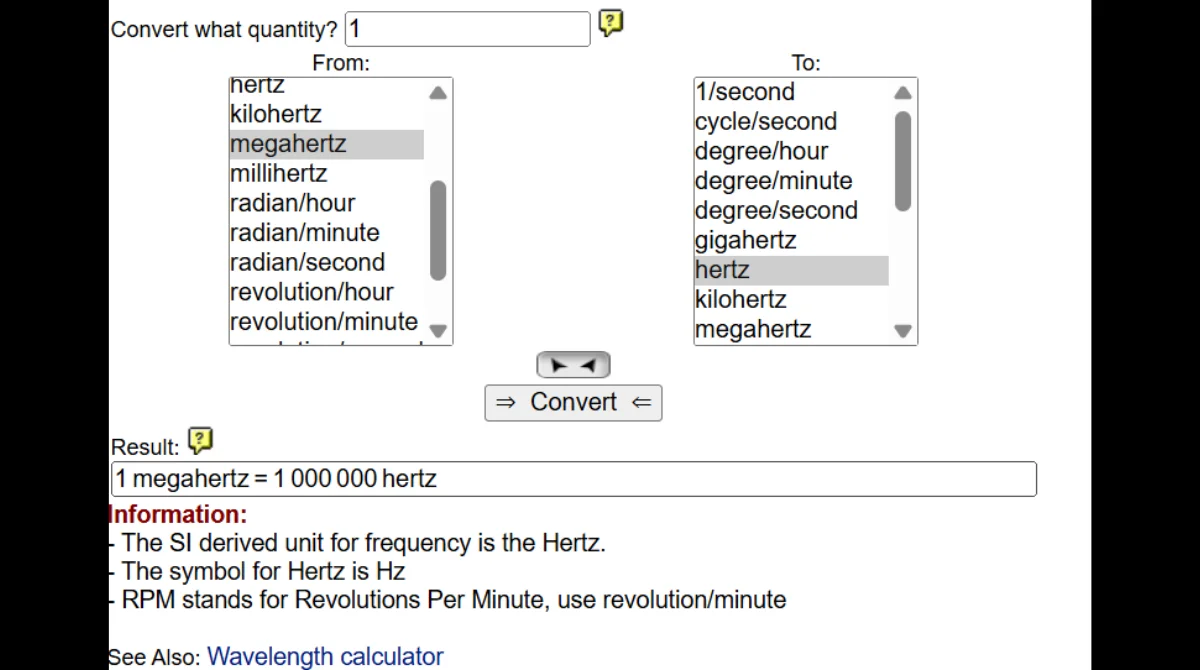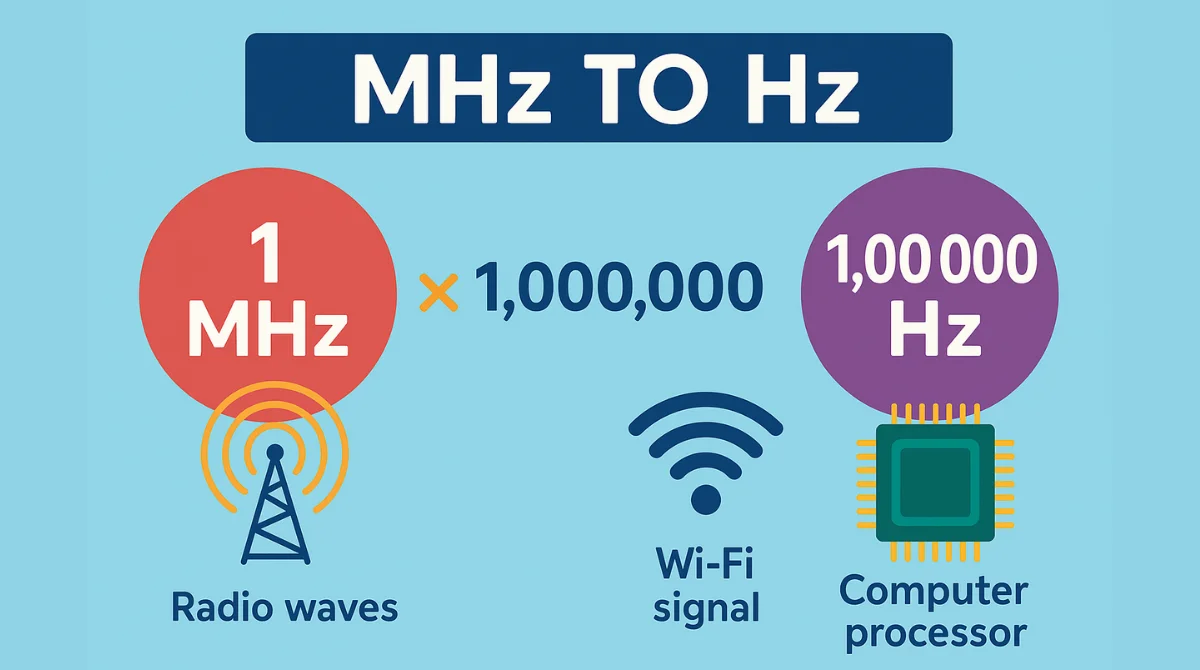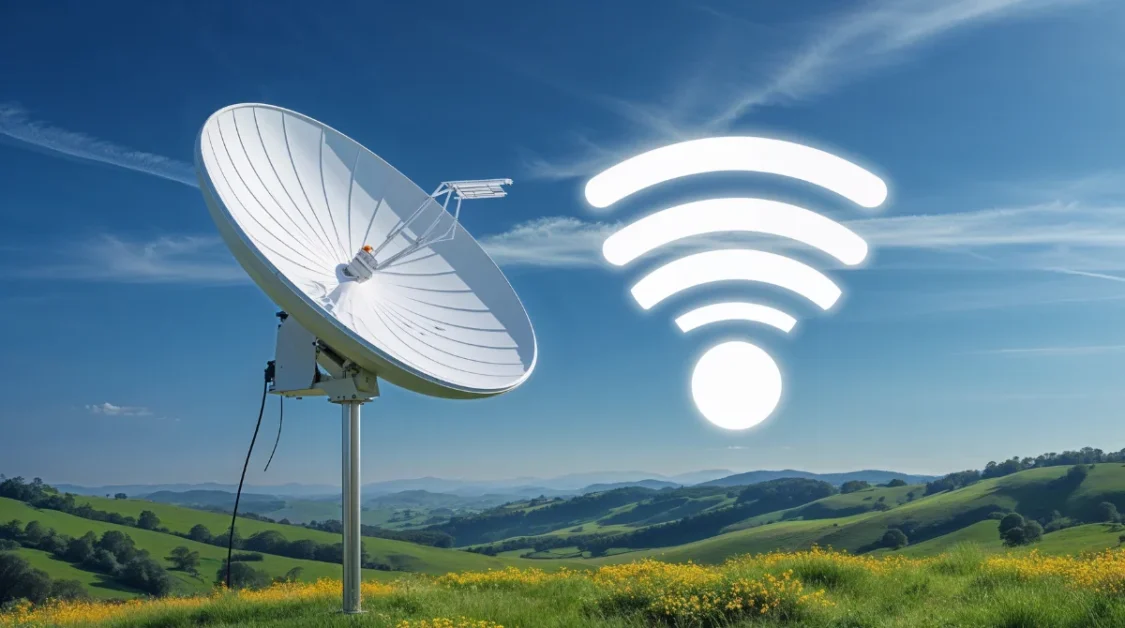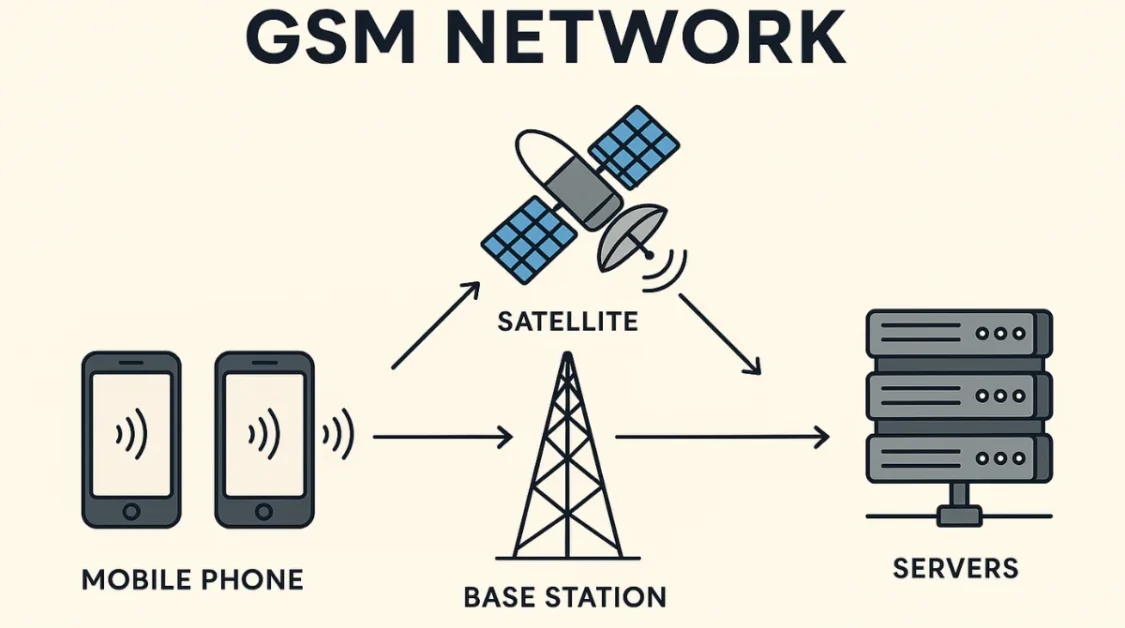Introduction
We frequently encounter terminology like MHz and Hz in our daily lives, particularly when interacting with electronics, music, or even domestic appliances. However, how do these concepts relate to one another and what do they mean? Discover the simplest way to convert megahertz (MHz) to hertz (Hz) as we explore the world of frequency.
What is Frequency?
The number of times something occurs in a given time frame, typically one second, is known as its frequency. It frequently refers to how frequently a wave pattern, such as sound, light, or radio waves, completes one complete cycle per second in both science and daily usage. The hertz (Hz), which bears the name of German physicist Heinrich Hertz, is the unit of measurement for frequency. One hertz is equal to one cycle per second. Therefore, if a sound wave vibrates 100 times per second, its frequency is 100 Hz.This idea aids in our comprehension of radio transmissions, music notes, and even the speed at which our internet operates. A fundamental concept in physics, electronics, and many of the technologies we use on a daily basis is frequency.
Understanding Hertz (Hz)
The International System of Units (SI) uses a hertz as the standard unit of frequency. One hertz is equal to one cycle per second.Numerous periodic phenomena, including radio waves, sound waves, and even the ticking of a clock, are frequently described using this unit.
In our daily lives, we encounter frequencies in a variety of situations:
- Music: A note’s frequency determines its pitch. For instance, the note A above middle C has a frequency of 440 Hz.
- Electricity: The typical electrical system in many nations runs at 50 or 60 Hz, which means that the current changes direction 50 or 60 times every second.
- Computers: Gigahertz (GHz), which stands for billions of cycles per second, is a common unit of measurement for a computer’s CPU speed.
What is Megahertz (MHz)?
Megahertz is a multiple of hertz. The prefix “mega” means one million, so:
1 MHz = 1,000,000 Hz
Higher frequencies are frequently expressed using this unit, particularly in the domains of computing, telecommunications, and radio broadcasting.
For example:
- Radio Stations: FM radio stations use the 88–108 MHz frequency band to operate.
- Wi-Fi: 2.4 GHz (2,400 MHz) and 5 GHz (5,000 MHz) are the typical Wi-Fi frequencies.
- Processors: While modern processors are frequently measured in GHz, older computer processors ran at rates measured in MHz, such as 500 MHz.
Converting MHz to Hz

Megahertz to hertz conversion is simple. To convert 1 MHz to 1,000,000 Hz, simply double the megahertz by 1,000,000.
Formula:
Frequency (Hz) = Frequency (MHz) × 1,000,000
Examples:
- 1 MHz is equal to 1 × 1,000,000, or 1,000,000 Hz.
- 5 MHz is equal to 5 × 1,000,000, or 5,000,000 Hz.
- 0.5 MHz is equal to 0.5 × 1,000,000, or 500,000 Hz.
You may easily convert any frequency from MHz to Hz with this straightforward multiplication.
Why Use Different Units?
Why we use different quantities like Hz, kHz (kilohertz), MHz, and GHz may be a mystery to you. The rationale is pragmatic. It is simpler to communicate and comprehend big or tiny numbers when the right units are used.
For example, it is more convenient to state that a processor operates at 2 GHz rather than 2,000,000,000 Hz.
Here’s a quick reference:
- 1 kHz = 1,000 Hz
- 1 MHz = 1,000 kHz = 1,000,000 Hz
- 1 GHz = 1,000 MHz = 1,000,000,000 Hz
Real-Life Applications
The primary concept of frequency is the number of times an event takes place in a specific second. Frequency is employed in many of the technology we use on a daily basis, including phones, radios, the internet, and even medical devices. Let’s examine how it functions in various contexts:
1. Radio and Television Broadcasting
When you turn on your radio and choose a station, the number 101.1 FM stands for the frequency 101.1 megahertz (MHz). The radio station emits that particular signal. This signal is picked up by your radio, which then plays the sound. Because each station uses a distinct frequency, they don’t mix.
2. Mobile Phones
In order to utilize the internet and make calls, your phone must be able to connect to mobile towers. Frequencies, expressed in MHz or GHz, are used to do this. Different frequency bands are used by 3G, 4G, and 5G.These frequencies have an impact on your network coverage and internet speed.
3. Wi-Fi and Bluetooth
Bluetooth and Wi-Fi both use radio waves for data transmission and reception. 2.4 GHz and 5 GHz are the typical frequencies used by Wi-Fi. 2.4 GHz is mostly used by Bluetooth. These enable cordless connections between your phone and your headphones or the internet. The frequency enables and speeds up this wireless connection.
4. Medical Imaging
Ultrasound equipment are used in hospitals to view inside the body. High-frequency sound waves, typically between 2 MHz and 18 MHz, are released by these devices. These sound waves produce visuals on a screen after bouncing off bodily parts. High frequencies aid in visual clarity, allowing medical professionals to see what’s happening inside of you.
5. Computing
Your computer’s CPU is comparable to its brain. Every second, it completes millions or even billions of tiny tasks. It operates at a speed known as the “clock speed,” which is expressed in MHz or GHz. A CPU running at 2.5 GHz, for instance, may complete 2.5 billion tasks per second. A computer with a faster processor is faster.
These illustrations demonstrate how frequency is used in everyday technologies and is not only a theoretical concept. Knowing it makes it easier to understand how devices like radios, phones, the internet, and even medical equipment operate.
Understanding Frequency in Sound
Our perception of sound is greatly influenced by frequency. The normal frequency range that the human ear can detect is 20 Hz to 20,000 Hz (20 kHz). Ultrasonic sounds are those that are higher than 20 kHz, and infrasound sounds are those that are lower than 20 Hz.
Musical notes correspond to specific frequencies. For instance:
- The frequency of middle C on a piano is roughly 261.6 Hz.
- For the A above middle C (A4), the typical frequency is 440 Hz.
While lower frequencies result in lower-pitched noises, higher frequencies yield higher-pitched sounds.
Frequency and Wavelength
Frequency and wavelength are inversely related. Wavelength decreases with increasing frequency and vice versa. This relationship is described by the formula:
Speed = Frequency × Wavelength
Light and radio waves are examples of electromagnetic waves whose speed in a vacuum is constant at about 299,792,458 meters per second. Consequently, you can determine the wavelength by knowing the frequency and vice versa.
Tools for Conversion: MHz to Hz
Although converting megahertz (MHz) to hertz (Hz) is simple, there are times when using online tools increases speed and accuracy, especially when working with large or complicated figures.The following practical tools can help you convert MHz to Hz with ease:
- Online frequency converters: A lot of websites provide free frequency converters that allow you to enter a value in MHz and receive the value in Hz right away. These technologies process huge numbers and decimals fast and accurately.
- Calculator Apps: The majority of smartphone calculator apps let you convert MHz values to Hz by multiplying them by one million. Scientific calculators that come with PCs or smartphones can also be used.
- Spreadsheet Software: Using basic calculations, applications such as Google Sheets and Microsoft Excel can convert MHz to Hz. Entering `=A1*1000000`, for instance, will change the value in cell A1 from MHz to Hz.
- Programming Languages: Python and other programming languages may swiftly convert MHz to Hz by multiplying the amount by one million if you are familiar with coding.
Whether you are a hobbyist, engineer, or student, these tools let you make conversions more quickly and with fewer errors.
Conclusion
We can better understand the technology we use on a daily basis if we know the relationship between megahertz (MHz) and hertz (Hz). Whether you’re using your computer or smartphone, listening to music on the radio, or connecting to Wi-Fi, frequency is present everywhere. It is simple to convert between these numbers and comprehend how quickly or frequently something occurs when one knows that 1 MHz is equal to 1,000,000 Hz, particularly in electronics and communication systems. This information is helpful not only in science but also in everyday life. Frequency has an impact on how well our electronics function, whether you’re checking your processor speed or tuning in to your favorite radio station. We can use and enjoy modern technology more effectively the more we comprehend it.
Related Topic: What is a Watt?



